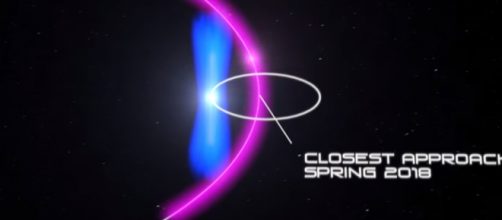Approaching a bright star
A pulsar is estimated to produce a huge display of gamma rays when it passes close to the orbit of its companion type Be star. The pulsar is presently accelerating towards the star at a 25-year period. The next periastron (close approach) to the star is projected to occur in the first months of 2018.
Gamma ray emitter
PSR J2032 is a radio and gamma-ray emitting pulsar discovered by the Large Area Telescope (LAT) of the Fermi Gamma-ray Space Telescope.The pulsar spins at a rate of seven times per second P= 143ms and it´s located in the direction of Cygnus constellation.
It orbits a binary companion known as MT91 213, which is a Be star 15 times the mass of the sun.
Remnant of an explosion
J2032 is the leftover of the explosion of a star that went supernova. Its size is as big as a small city 12 miles (19 km) across and is nearly twice the mass of the sun. It has a strong magnetic field and rotates once every 143 milliseconds of 7 times a second. Scientists are able to detect pulsars from the regular beams of gamma rays and X-rays they sent into space and which cross the orbit of the earth.
Companion star
MT91 213 is a Be star that is 15 times as massive as the sun and 10,000 times more brilliant. The star is classified as a spectral type B star. These types of stars are very bright and tend to appear blue in the night sky.
Their spectral lines show neutral helium and moderate lines of hydrogen. Like other stars, they are made of huge disks of gas and dust.
Fermi Space Telescope
Fermi Gamma-ray Space Telescope is a powerful observatory that allows scientists to observe light from distant objects, including black holes, neutron stars, super novae, and more, in energies that range from 8 KeV to more than 300 GeV. By studying the cosmos in the gamma ray spectrum, astronomers are gaining a deeper knowledge about the origins and evolution of the universe.
On the day of the approach, which is expected to occur in the spring of 2018, Fermi telescope will be observing the event in the gamma ray spectrum. This event will allow astronomers to perform studies on the massive star, including its gravity, mass and magnetic field.

